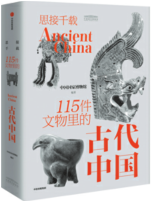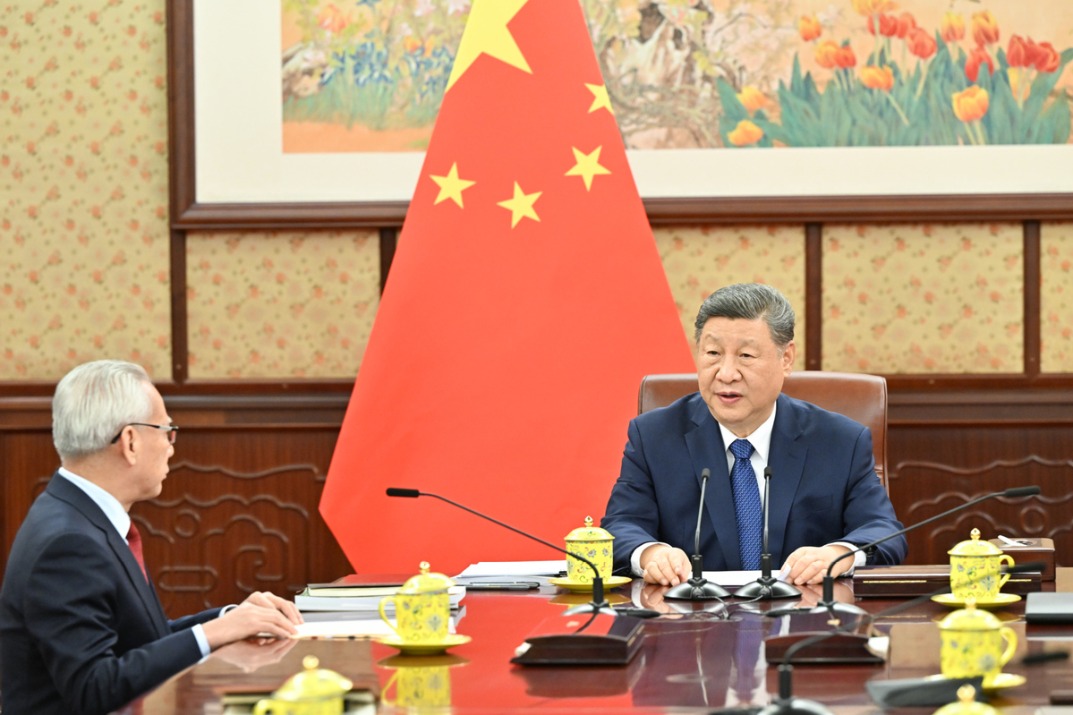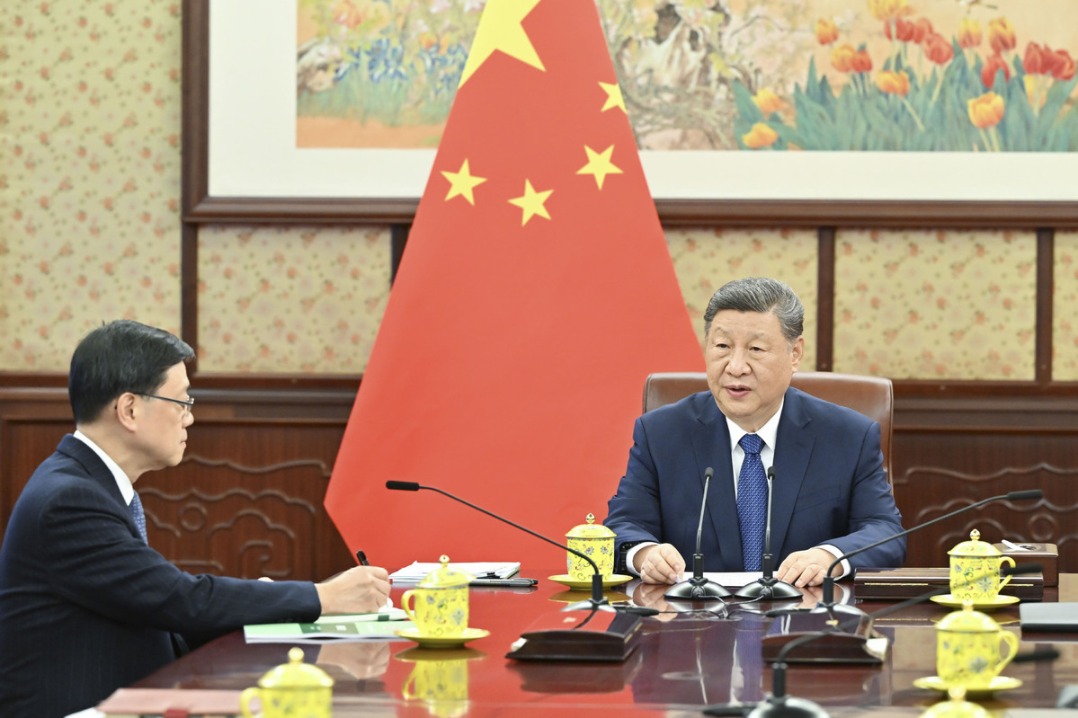National Museum's new book lets artifacts 'talk'

The long-term Ancient China exhibition is the first stop of many when visiting the National Museum of China, located on Chang'an Avenue in downtown Beijing. The exhibition covers several galleries and charts Chinese history from prehistoric times to the last monarchy, the Qing Dynasty (1644-1911). It shows selected artifacts from the museum's immense and rare collection.
The museum received nearly 7 million visitors in 2024, with the Ancient China exhibition registering over 6.8 million visits.
Recently, the museum published an informative book titled The History of Ancient China in 115 Objects, introducing 115 fine works of historical and cultural values on display at the namesake exhibition.
The artifacts featured in the book include an extravagantly adorned empress' coronet of the Ming Dynasty (1368-1644), which attracts visitors waiting in a long line for a brief look at the gallery where it is on show.
The headwear belonged to Empress Xiaoduan, wife of Emperor Shenzong, more than 400 years ago.
The majestic extravagance is vividly evidenced by the thousands of pearls and precious stones, as well as nine gold dragons and nine phoenixes, that embellish the entire bamboo structure and silk coating.
It is so popular among visitors that the museum's creativity department has developed a dozen consumer products, including a coronet-shaped magnet which sold 1 million pieces in March.
The book's texts were written by the museum's nine staff members who are experienced in writing and giving oral tours, and designing public programs and educational courses for young visitors.
Zhao Jingshu, one of the authors, remembers during a tour when she was introducing a Neolithic eagle-shaped pottery vessel, which is featured in the book, a little girl asked why people back then didn't craft it to look like a cat.
"It was such a cute moment that I wrote it in my part, the prehistoric age," she says.
"The book is like a guest book in which I've tried to satisfy the visitors' curiosity. Maybe people will read the book before they come to the museum next time. There are images that magnify details which are inaccessible in a crowded gallery."
Wang Xi, another writer and the book's coordinator, says what was on her mind when writing was to help readers fall in love with the artifacts and truly understand their value. She tried to incorporate imaginary content grounded on historical facts to increase readability.
The credit for 700 high-resolution images and the rich information provided in the book also goes to the museum for its work in building a digital database of its collections since 2019.
Ding Pengbo, deputy director of the National Museum of China, said at the Third UNESCO High-Level Forum for Museums in April in Hangzhou, Zhejiang province, that the museum has acquired the images of some 720,000 artifacts and constructed three-dimensional models of about 7,500 objects.
The museum's creativity department has launched products such as souvenir magnets inspired by the artifacts in the book.


Today's Top News
- Crossing a milestone in the journey called Sinology
- China-Russia media forum held in Beijing
- Where mobility will drive China and the West
- HK community strongly supports Lai's conviction
- Japan paying high price for PM's rhetoric
- Japan's move to mislead public firmly opposed






























